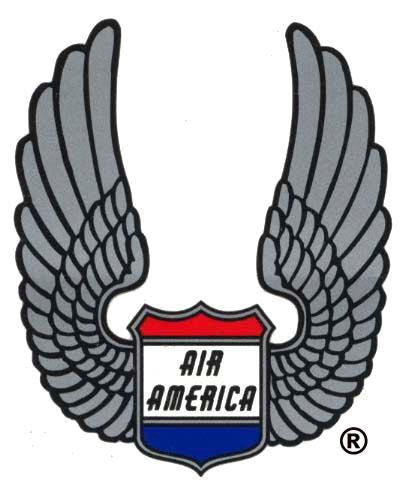All in a Day's Work
By Samuel T. Jordan
The fifteenth of July 1965 was a long time ago, but some things you never forget.
I had been flying an H-34 for Air America®, Inc., supplying outposts in the Lima Site 36 area located about 20 miles north of the Plains des Jars in central Laos. This outpost surrounded LS-36, a heavily fortified key friendly position with a 3,500 ft. airfield.
Very late in the afternoon of 14 July, I overheard a call from ResCap that an aircraft was down in Sam Neua province near the North Vietnamese border. I was working alone just to the west and could reach the area in 15 minutes. Had there been another of our helicopters nearby, I would have attempted a pickup. All rescue operations, however, required two helicopters and solo attempts were not permitted.
The next morning, I was told that two other Air America® helos would handle the pick-up and to continue on my re-supply work for the LS-36 outposts. About an hour later, I was called and told that I was now part of the rescue effort and to return to LS-36 for full fuel. An earlier attempt at a pickup had failed when a helo had a hydraulic servo shot out while it foolishly tried to cross the Sam Neua highway that was crawling with 20mm, 37mm and ZPU 14.5mm guns. The well protected highway curved south through Sam Neua to the enemy-help Plains Des Jars area and was a major supply route from North Vietnam.
At any rate, I elected to take off for the pickup with only half a fuel load. My copilot was new to Air America® and was unfamiliar with rescue operations and the local area. The pickup zone was at about 4,000 ft and a hover with a full load of fuel would have been impossible at that altitude. I elected to come in from northwest of Sam Neua, turning east to approach from the north, avoiding the highway.
Another Air America® helicopter accompanied me along with an Air Force Jolly Green helo. Immediately upon entering the rescue area, we picked up our overhead escort of T-28s flown by other Air America® crews. Within moments I spotted Lt Don Eaton on a ridgeline. Before I was able to start in for the pickup, I was told to hold off until a positive ID could be made. A T-28 then flew low over his head while I circled around to approach the pickup area. I just touched lightly on the tall grass-covered ridge and was off as soon as Eaton was on board. From him, we tried to discover the location of Eaton's downed pilot, Lt Don Boecker. All we could find out was that he was nearby.
As we circled the are, some red smoke drifted up from a high stand of jungle about a mile west of the spot where we found Eaton. The two other helos hovered in the area, but couldn't spot the pilot. I could hear incoming transmissions from the ground giving us direction, but we were unable to receive a reply to our request for more information.
At last, my flight mechanic began to direct me to Boecker on the ground. I was hovering low in the trees when I spotted some gun flashes nearby at the edge of the jungle area. A call for help brought a bomb run by the T-28s that silenced the gunfire.
I hovered in the area over Boecker for what seemed like an eternity. I had no communications at all with my flight mechanic, who spoke very poor English. To complicate the confusion, he had taken his hard hat off for some reason while attempting to retrieve the downed pilot. The 100 ft hoist was about 10 feet short of reaching the ground and Boecker must have had to do some climbing to reach the hoist. When I was told by my flight mechanic that we had retrieved the pilot, I started to move out of the area. As it turned out, Boecker was actually hanging from the hoist outside the aircraft. Sending something was wrong, I asked again if he was on board. After a few moments I was told that he was definitely in the cabin. The total time in hove over Boecker must have been 20-30 minutes.
All the hovering at high power setting had used up practically all fuel on board and I had just enough to make a nearby friendly outpost just beyond a large ridge to the west. After pumping a 55 gallon drum of fuel, I departed for LS-36, where Eaton and Boecker were flown to Thailand on the Air America® Caribou. I spoke briefly with them before going back to my re-supply mission.
How they were able to track me down nearly 24 years later is beyond me. It was a wonderful reunion and the start of a great friendship. I must say that both are now looking considerably more elegant than they did on our first meeting.
(Reprinted with permission from the Tail Hook Association and The Hook magazine, Spring 1991)


